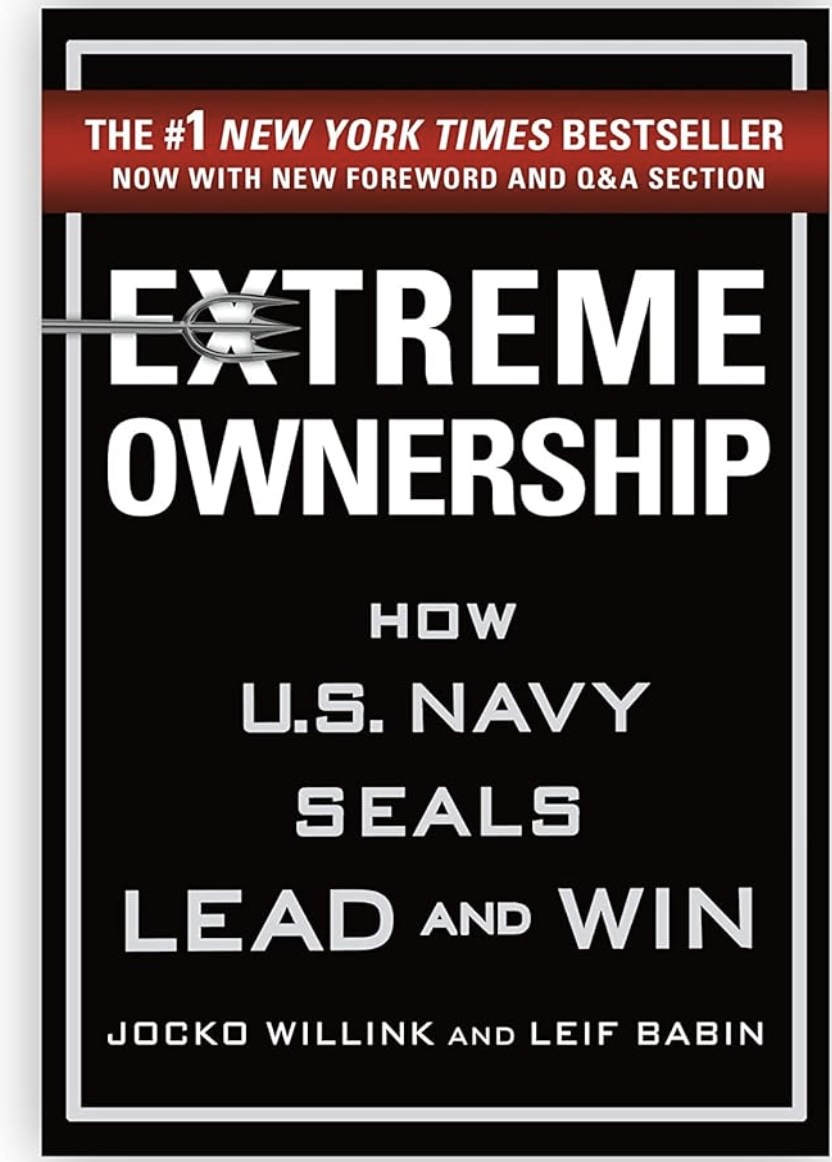Extreme Ownership - Lead and Win
10 Apr 2024
Extreme Ownership Defined
What is Extreme Ownership and why does it matter to a business leader?
Extreme Ownership is a mindset practiced by the authors of the book by that name. Jocko Willink and Leif Babin served our country as Navy SEALs, elite warriors of the United States Navy.
From the book’s introduction:
With Extreme Ownership, you must remove individual ego and personal agenda. It’s all about the mission. How can you best get your team to most effectively execute the plan in order to accomplish the mission? That is the question you have to ask yourself. That is what Extreme Ownership is all about.
This post offers a one-page discussion about the book.
People, Not Robots
Those of us who have not served in the military (including me) may be led to believe that military leaders have it easy because subordinates must follow orders blindly. Not true. U.S. Military Personnel are not robots. When a person chooses to enter the profession of arms, they are literally risking their lives for the mission. A person who accepts that level of risk must believe in the mission. That belief is communicated through effective leadership.
The book Extreme Ownership pulls the reader into the theatre of war where battlefield challenges are described. Leadership principles are extracted from each battlefield situation. And then each principle is applied to business. This framework is repeated throughout the book:
- Battlefield Experience
- Principle
- Application to Business
Death by PowerPoint
Before reading Extreme Ownership, I did not know that military briefings were conducted via Microsoft PowerPoint. It makes sense. PowerPoint is an effective communication tool.
At the same time, the book describes cases where military units were bogged down creating PowerPoint slides to satisfy bureaucrats. The same scenario happens in the business world! One evening at the combat operations post, the SEAL team was engaged in a PowerPoint marathon. They realized that the PowerPoint briefing document was getting in the way of mission execution.
So they cut the number of slides and simplified the briefing by focusing on one principle. It’s less important for the brass to have every mission detail. And it is more important for the military personnel on the ground (SEALs, Sailors, Marines, and Soldiers) to know their role and how to contribute to the overall mission.
Leaders and teams are more effective when everyone understands the broader mission objective, expressed as Commander’s Intent.
Commander’s Intent
It has been said that the first casualty of any war is the battle plan. Why? Because a battle plan, no matter how well thought out, can never consider every contingency.
Military commanders have learned that the Commander’s Intent must be communicated as part of any effective battle plan. Key questions to answer when sharing Commander’s Intent with the team:
- Do the members of the team understand the broader mission?
- Are the members of the team allowed to execute based on their understanding of the broader mission and standard operating procedures?
Running a military unit based on Commander’s Intent takes a lot of planning and forethought. But it’s worth it. The payoff comes when the organization faces an unexpected obstacle. And then the team delivers results in unexpected ways.
Train the team, communicate the Commander’s Intent, and enjoy the results of achievement.
Front Echelon: From Battlefield to Boardroom
The authors of Extreme Ownership served our country for decades. Upon retirement from the SEAL teams, they decided to share their leadership lessons with the business world. Today they grow business leaders through their leadership development company, Front Echelon.
In addition, author Jocko Willink teamed up with fellow martial artists to launch Victory MMA and Fitness in San Diego, CA.
Conclusion
Warfare is as old as human history. The best way to discourage an attacker is by being prepared to fight.
Our military units fight on the battlefield. As company leaders, we join with our teams to battle against tough business challenges. The similarities are fascinating.



